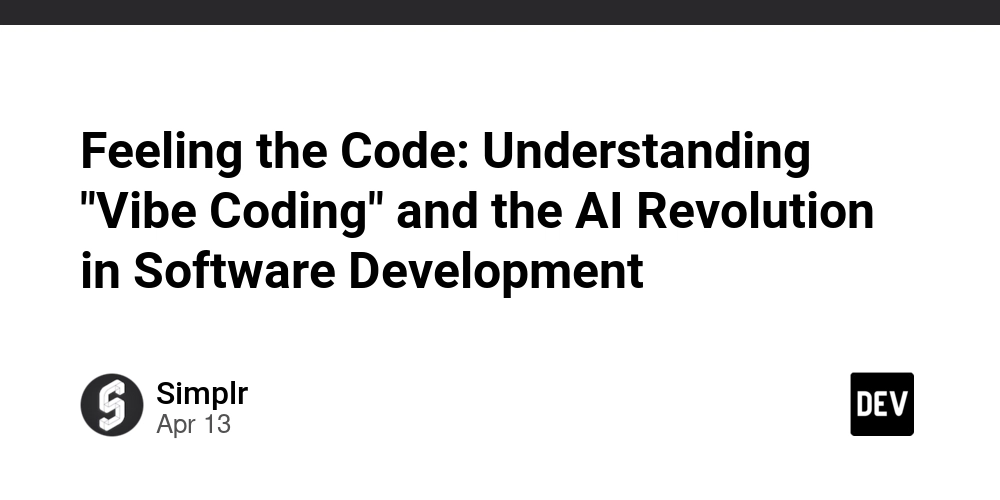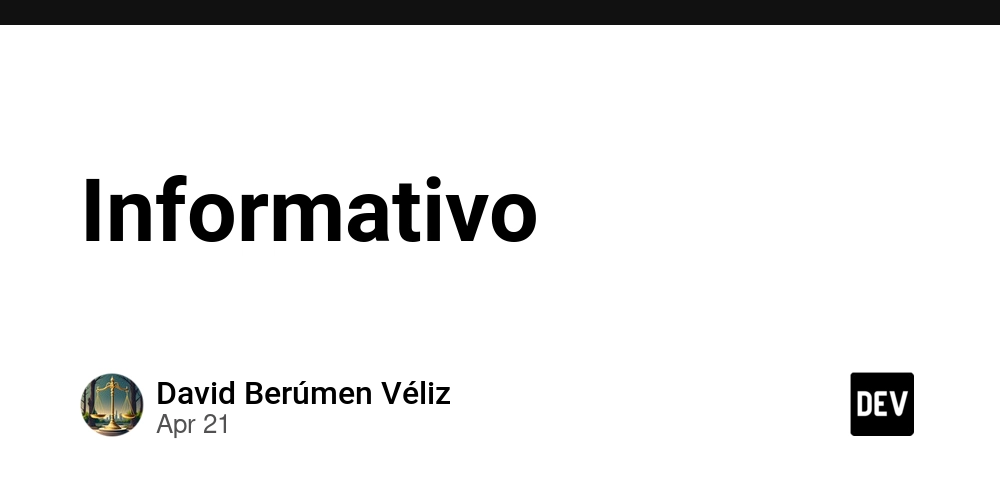Feeling the Code: Understanding "Vibe Coding" and the AI Revolution in Software Development
The way we build software is undergoing a seismic shift, and a new term has emerged from the epicenter: "vibe coding." Coined in early 2025 by AI luminary Andrej Karpathy, it describes a rapidly growing approach to development heavily reliant on artificial intelligence. But what exactly is it, is it just hype, and why should you care? This article dives deep into the world of vibe coding – exploring its mechanics, the tools powering it, its undeniable benefits, its significant risks, and why understanding this trend is crucial for anyone in the tech industry. What Exactly is "Vibe Coding"? At its core, vibe coding is an AI-dependent programming technique. Instead of meticulously writing every line of code, the developer describes the desired outcome or problem to a large language model (LLM) specialized in coding – often using natural language prompts (text or even voice). The process typically looks like this: Prompt: The developer tells the AI what they want ("Create a React component with a button that fetches user data from this API endpoint and displays the name"). Generate: The AI coding assistant (integrated into tools like Cursor, Replit, GitHub Copilot, etc.) generates the corresponding code block or even entire files. Test & Observe: The developer runs the generated code, focusing primarily on whether the output or behavior matches the intended "vibe." Does it feel right? Does it look right? Refine: Based on the observation, the developer provides feedback to the AI through further prompts ("Make the button blue," "Add error handling if the API fails," "Decrease the padding"). This iterative, conversational loop continues until the desired functionality is achieved. The key differentiator, as Karpathy put it, is sometimes "fully giving in to the vibes," potentially accepting and using the generated code without a deep, line-by-line analysis, trusting the AI's output as long as the result seems correct. This marks a shift from the developer as a meticulous scribe to more of a director or prompter, guiding the AI toward the goal. The Allure: Speed, Accessibility, and the Power of Modern AI Why has this concept gained traction so quickly? Unprecedented Speed: For certain tasks – scaffolding projects, eliminating boilerplate, implementing common patterns, building prototypes – AI can generate code far faster than a human typing manually. Developers report building simple apps or features in hours instead of days. Lowering Barriers: Vibe coding can empower individuals with less traditional coding experience or those unfamiliar with a specific language or framework to build functional software. It accelerates learning by providing instant examples and working code. AI Maturity: This trend is a direct consequence of the incredible advancements in LLMs (like Claude 3.5 Sonnet, GPT-4, Gemini models, and others). Their ability to understand natural language and generate coherent, often functional, code is the engine driving this shift. The Tools Enabling the "Vibe" This new workflow thrives within specific environments: AI-First Editors (e.g., Cursor, Windsurf): These tools are built from the ground up with AI integration at their core, offering seamless chat interfaces alongside the code, deep context awareness, and features designed for AI-driven generation and debugging. Online IDEs with AI (e.g., Replit AI): Platforms like Replit integrate powerful AI assistants directly into their browser-based development environments, facilitating rapid prototyping and collaborative vibe coding. Enhanced Code Assistants (e.g., GitHub Copilot Agent/Chat): Beyond simple autocompletion, these tools now offer conversational chat interfaces within popular editors (like VS Code), allowing developers to prompt for code, ask questions, and debug with AI help. General LLM Chatbots (e.g., ChatGPT, Claude, Gemini): Many developers use these tools in a separate window, pasting code and descriptions to get AI assistance before integrating the results back into their projects. Warning: When the "Vibe" Leads You Astray The speed and ease are tempting, but relying solely on the vibe without critical oversight is fraught with peril. Here’s how it can go wrong: Subtle Bugs & Logic Flaws: AI can generate code that looks right and passes basic tests but contains hidden errors, incorrect assumptions, or fails on edge cases. Debugging code you don't fully understand is a nightmare. Security Nightmares: Models trained on vast datasets might replicate common security vulnerabilities (SQL injection, XSS, improper authentication) that a developer focused only on the output might miss. Performance Bottlenecks: AI might opt for inefficient algorithms or data structures, leading to code that works fine initially but grinds to a halt under real-world load. Hallucinations & Non-Functional Code: LLMs can invent functions, misuse APIs, or generate code that simply doesn't compile, requiring significant

The way we build software is undergoing a seismic shift, and a new term has emerged from the epicenter: "vibe coding." Coined in early 2025 by AI luminary Andrej Karpathy, it describes a rapidly growing approach to development heavily reliant on artificial intelligence. But what exactly is it, is it just hype, and why should you care?
This article dives deep into the world of vibe coding – exploring its mechanics, the tools powering it, its undeniable benefits, its significant risks, and why understanding this trend is crucial for anyone in the tech industry.
What Exactly is "Vibe Coding"?
At its core, vibe coding is an AI-dependent programming technique. Instead of meticulously writing every line of code, the developer describes the desired outcome or problem to a large language model (LLM) specialized in coding – often using natural language prompts (text or even voice).
The process typically looks like this:
- Prompt: The developer tells the AI what they want ("Create a React component with a button that fetches user data from this API endpoint and displays the name").
- Generate: The AI coding assistant (integrated into tools like Cursor, Replit, GitHub Copilot, etc.) generates the corresponding code block or even entire files.
- Test & Observe: The developer runs the generated code, focusing primarily on whether the output or behavior matches the intended "vibe." Does it feel right? Does it look right?
- Refine: Based on the observation, the developer provides feedback to the AI through further prompts ("Make the button blue," "Add error handling if the API fails," "Decrease the padding").
This iterative, conversational loop continues until the desired functionality is achieved. The key differentiator, as Karpathy put it, is sometimes "fully giving in to the vibes," potentially accepting and using the generated code without a deep, line-by-line analysis, trusting the AI's output as long as the result seems correct. This marks a shift from the developer as a meticulous scribe to more of a director or prompter, guiding the AI toward the goal.
The Allure: Speed, Accessibility, and the Power of Modern AI
Why has this concept gained traction so quickly?
- Unprecedented Speed: For certain tasks – scaffolding projects, eliminating boilerplate, implementing common patterns, building prototypes – AI can generate code far faster than a human typing manually. Developers report building simple apps or features in hours instead of days.
- Lowering Barriers: Vibe coding can empower individuals with less traditional coding experience or those unfamiliar with a specific language or framework to build functional software. It accelerates learning by providing instant examples and working code.
- AI Maturity: This trend is a direct consequence of the incredible advancements in LLMs (like Claude 3.5 Sonnet, GPT-4, Gemini models, and others). Their ability to understand natural language and generate coherent, often functional, code is the engine driving this shift.
The Tools Enabling the "Vibe"
This new workflow thrives within specific environments:
- AI-First Editors (e.g., Cursor, Windsurf): These tools are built from the ground up with AI integration at their core, offering seamless chat interfaces alongside the code, deep context awareness, and features designed for AI-driven generation and debugging.
- Online IDEs with AI (e.g., Replit AI): Platforms like Replit integrate powerful AI assistants directly into their browser-based development environments, facilitating rapid prototyping and collaborative vibe coding.
- Enhanced Code Assistants (e.g., GitHub Copilot Agent/Chat): Beyond simple autocompletion, these tools now offer conversational chat interfaces within popular editors (like VS Code), allowing developers to prompt for code, ask questions, and debug with AI help.
- General LLM Chatbots (e.g., ChatGPT, Claude, Gemini): Many developers use these tools in a separate window, pasting code and descriptions to get AI assistance before integrating the results back into their projects.
Warning: When the "Vibe" Leads You Astray
The speed and ease are tempting, but relying solely on the vibe without critical oversight is fraught with peril. Here’s how it can go wrong:
- Subtle Bugs & Logic Flaws: AI can generate code that looks right and passes basic tests but contains hidden errors, incorrect assumptions, or fails on edge cases. Debugging code you don't fully understand is a nightmare.
- Security Nightmares: Models trained on vast datasets might replicate common security vulnerabilities (SQL injection, XSS, improper authentication) that a developer focused only on the output might miss.
- Performance Bottlenecks: AI might opt for inefficient algorithms or data structures, leading to code that works fine initially but grinds to a halt under real-world load.
- Hallucinations & Non-Functional Code: LLMs can invent functions, misuse APIs, or generate code that simply doesn't compile, requiring significant developer intervention.
- Technical Debt on Steroids: Code generated purely for function, without regard for structure, readability, or maintainability, can quickly become an unmanageable mess, hindering future development.
- Skill Degradation: Over-reliance can prevent developers from truly learning the fundamentals or honing their problem-solving skills.
It's crucial to distinguish pure "vibe coding" (trusting the output) from responsible AI-assisted development, where developers use AI as a powerful tool but still rigorously review, test, understand, and take ownership of the code before committing it.
Navigating the New Landscape: Challenges for Developers
Embracing these tools effectively comes with its own set of challenges:
- Mastering Prompt Engineering: Getting useful output requires crafting clear, specific, and context-rich prompts – a new essential skill.
- Context Window Limits: AI can only consider a limited amount of code at once, making it challenging to generate code that fits perfectly within large, complex projects.
- Debugging the Black Box: Figuring out why AI-generated code is wrong can be harder than finding bugs in your own code.
- Integration & Consistency: Ensuring AI-generated code seamlessly integrates with existing human-written code requires careful oversight.
- Trust Calibration: Learning when to trust the AI and when to be deeply skeptical is key.
The Inevitable Shift: Why Ignoring AI is Not an Option
Despite the risks and challenges, the integration of AI into the development workflow feels increasingly inevitable.
- The Productivity Imperative: The speed advantages for many tasks are undeniable. Teams leveraging AI effectively will simply move faster.
- Complexity Management: AI holds the potential to help manage the ever-increasing complexity of modern software systems.
- Economic Reality: Businesses demand faster time-to-market and efficiency. AI tooling is becoming a key enabler.
The core message for developers, engineers, and tech leaders is stark: sleeping on AI and techniques like vibe coding means risking being left behind. The productivity gap between those who leverage AI effectively and those who don't is widening. Skills are shifting – prompt engineering, AI interaction, and critical evaluation of AI output are becoming paramount. The tools are improving exponentially; those familiar with them today will be best placed to harness their future capabilities.
Conclusion: Finding the Human-AI Balance
"Vibe coding" is more than just a buzzword; it's a signal of a profound transformation in software creation. AI is becoming a powerful, albeit imperfect, co-developer. The future likely doesn't belong to AI replacing humans, nor to humans stubbornly ignoring AI. It belongs to those who master the human-AI collaboration.
The path forward involves embracing AI tools for their strengths – speed, pattern matching, boilerplate reduction – while mitigating their weaknesses through rigorous human oversight, critical thinking, strong engineering principles, comprehensive testing, and a commitment to understanding the systems we build.
The "vibe" might help you get started faster, but it's human expertise, judgment, and accountability that will ensure we build robust, secure, and maintainable software for the future. Learning to harness this synergy is no longer optional; it's the next essential step in the evolution of software development.


















_Tanapong_Sungkaew_via_Alamy.jpg?width=1280&auto=webp&quality=80&disable=upscale#)
















































